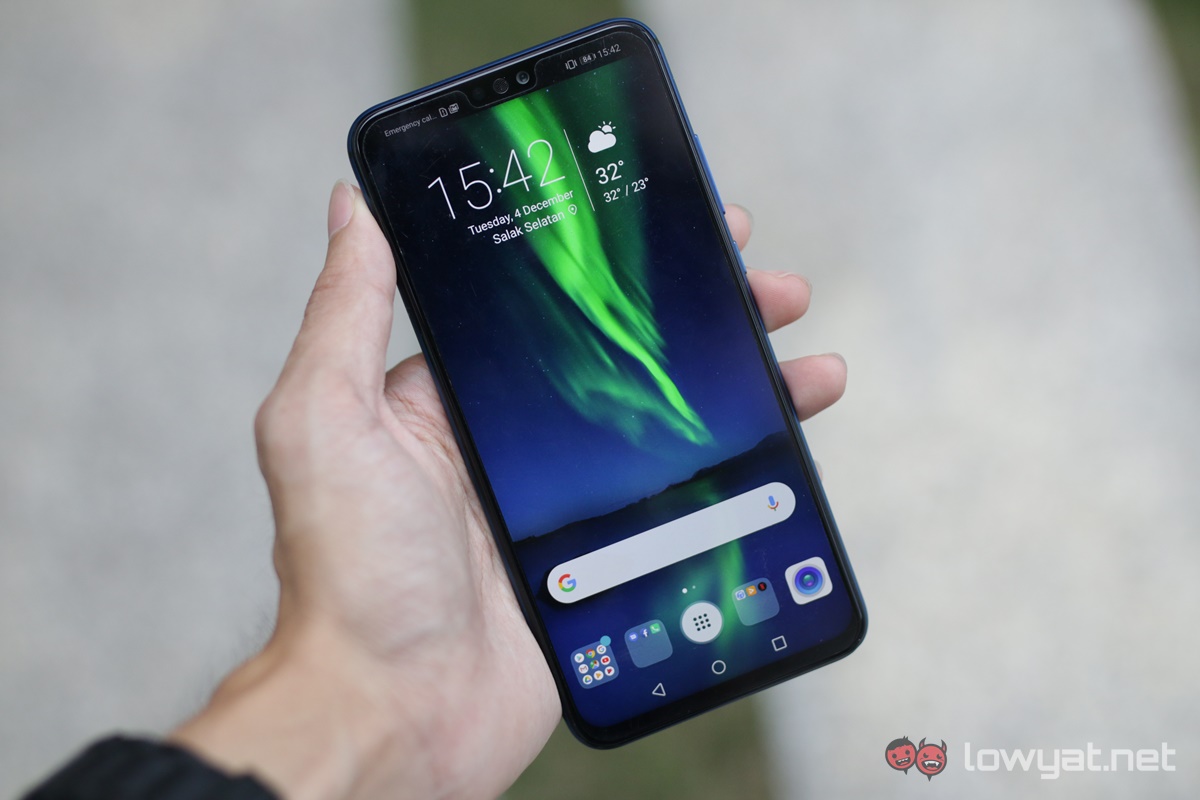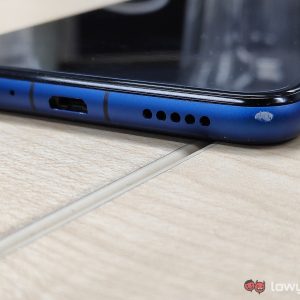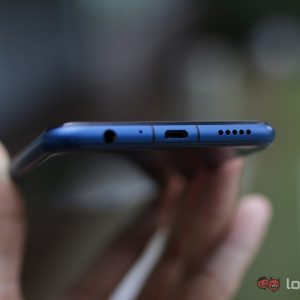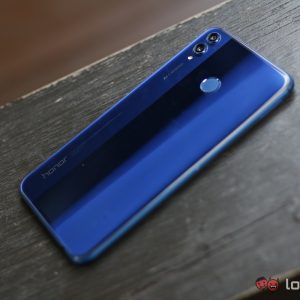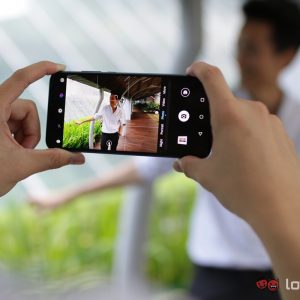Months after the launch of the Honor 10, the brand has made some concerted effort in trying to corner the mid-range market. To do that, the company launched its new mid-range flagship, the Honor 8X.
There’s a lot to love about the Honor 8X. But as these things usually go, there are some issue that do require ironing out.
Specifications
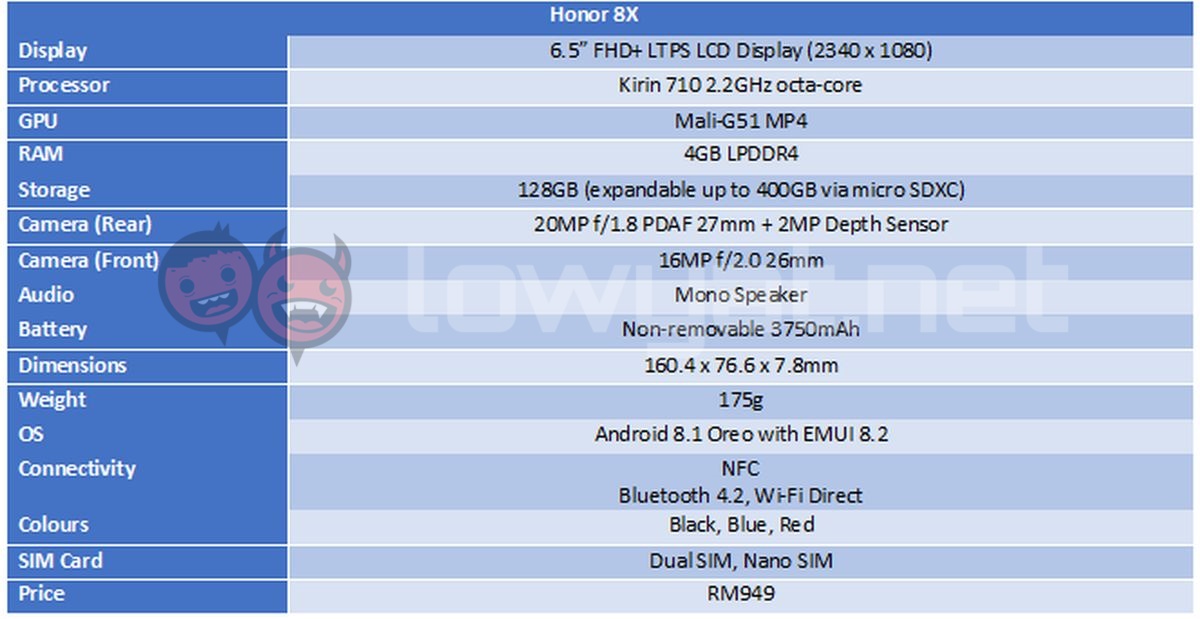
It shouldn’t come as a surprise to anyone, but the hardware in the Honor 8X is a near mirror image of Huawei’s Nova 3i. It sports the extremely efficient Kirin 710 SoC, a subject that we’ll discuss at great length later on.
The phone also comes with a mere 4GB of RAM and 128GB of internal storage, which can be expanded via a microSD card slot. Should you feel the on board storage to be lacking. I should point out that there is actually a 6GB variant of the Honor 8X, but at this point in time, Honor isn’t officially bringing in that model.
Design
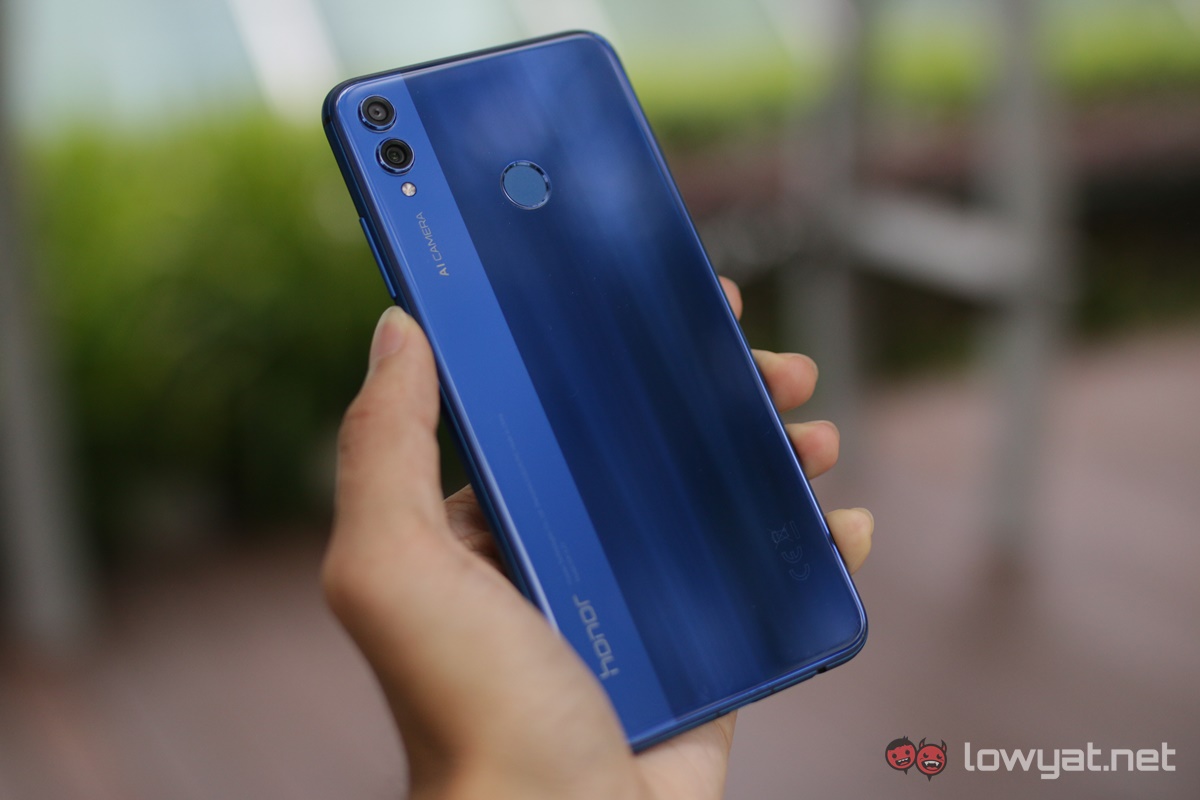
One of the most striking points of the Honor 8X is its really reflective and mirror sheen back. It makes the phone look really gorgeous, no matter which angle you look at it. In fact, that factor is amplified by the bright contrasting blue and red colour variants that it comes in.
A notch that partially obscures notifications.
Alas, like most smartphones today – and seeing how it’s the trend – the Honor 8X’s display features a notch. To be precise, the notch is technically smaller than other notches I’ve seen, and yet it somehow manages to obscure some of the notifications icons. Yes, you can hide it and make it blend via the on-board software, but frankly, it makes next to no difference.
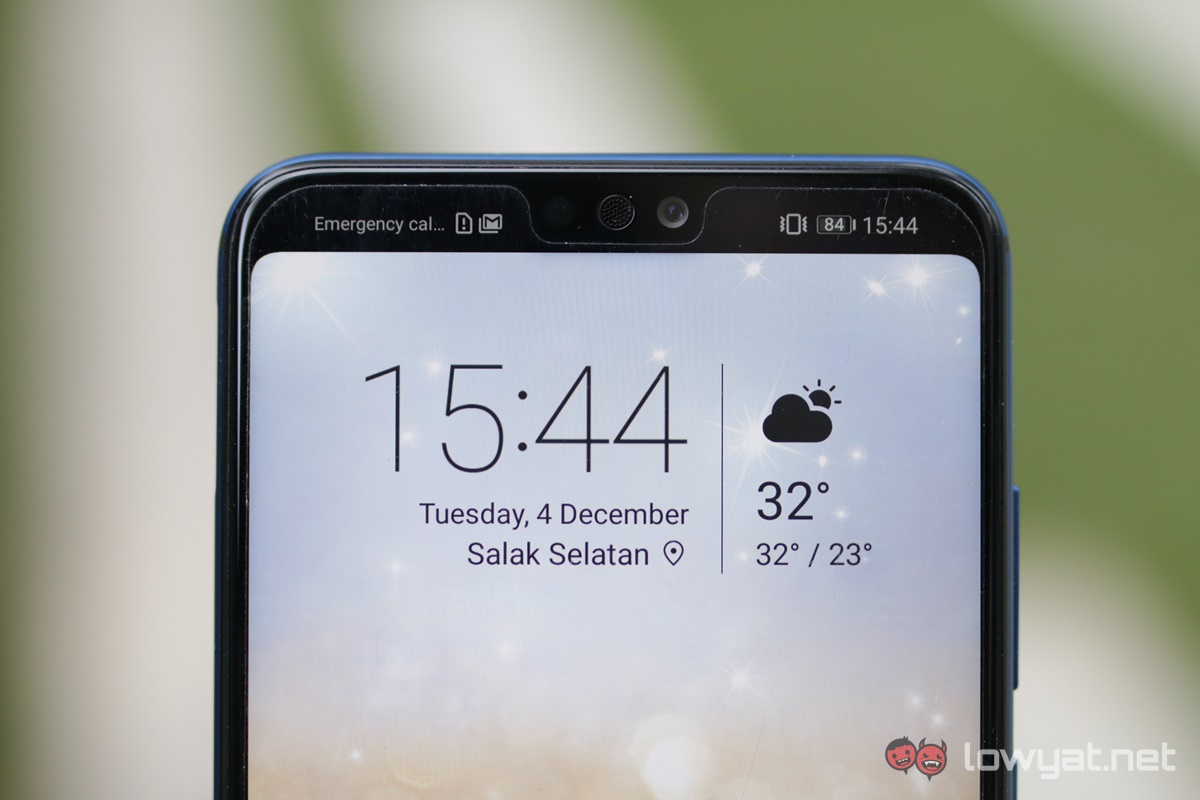
Surprisingly, the Honor 8X still uses the aging micro USB port instead of the more current USB Type-C port that most smartphones – even mid-range models – use. If anything, the latter port is already an industry standard. I can’t help but think that this is a missed opportunity on Honor’s – and by extension, it’s parent company Huawei – part to standardise the medium across the board.

Moving on, the Honor 8X’s display is actually a big one, literally. It measures in at 6.5-inches, but more impressively, it’s a Full HD+ display, with an aspect ratio of 19.5: 9. Thanks to that, the display stretches side-to-side, and is nearly bezel-less. I say nearly because it’s still got a pretty noticeable chin. There’s also a 3.5mm headphone jack located at the bottom of the phone. A welcome feature that is slowly and clearly disappearing with new phones.
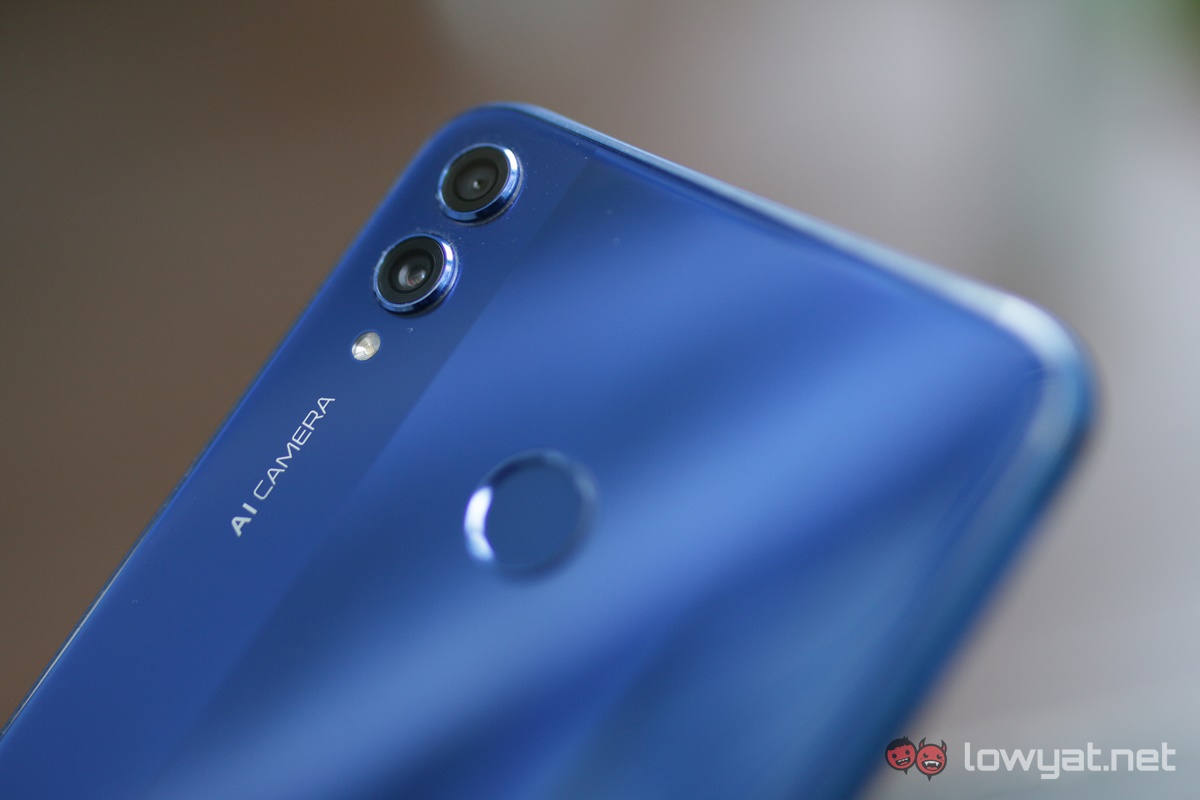
On the subject of audio, I find the location of the Honor 8X’s speaker grille at the bottom right of the phone to be – for lack of a better word – odd. If I flip it into landscape mode, my right thumb will, in one way or the other, end up covering it. The story’s the same if I flip it around, only this time, it’s the base of my palm that mutes any sound coming out from it. That said, it’s not huge issue, and I mitigate it by simply holding it from the back.
In regards to its design, the phone’s large size and polished glass back is also something of a flaw. In my hands, the phone feels a little cumbersome, and on occasion, there were incidents when the phone slipped out of my hand. As a plus point, the phone is incredibly durable and drop-resistant, and comes out virtually unscratched.
User Experience
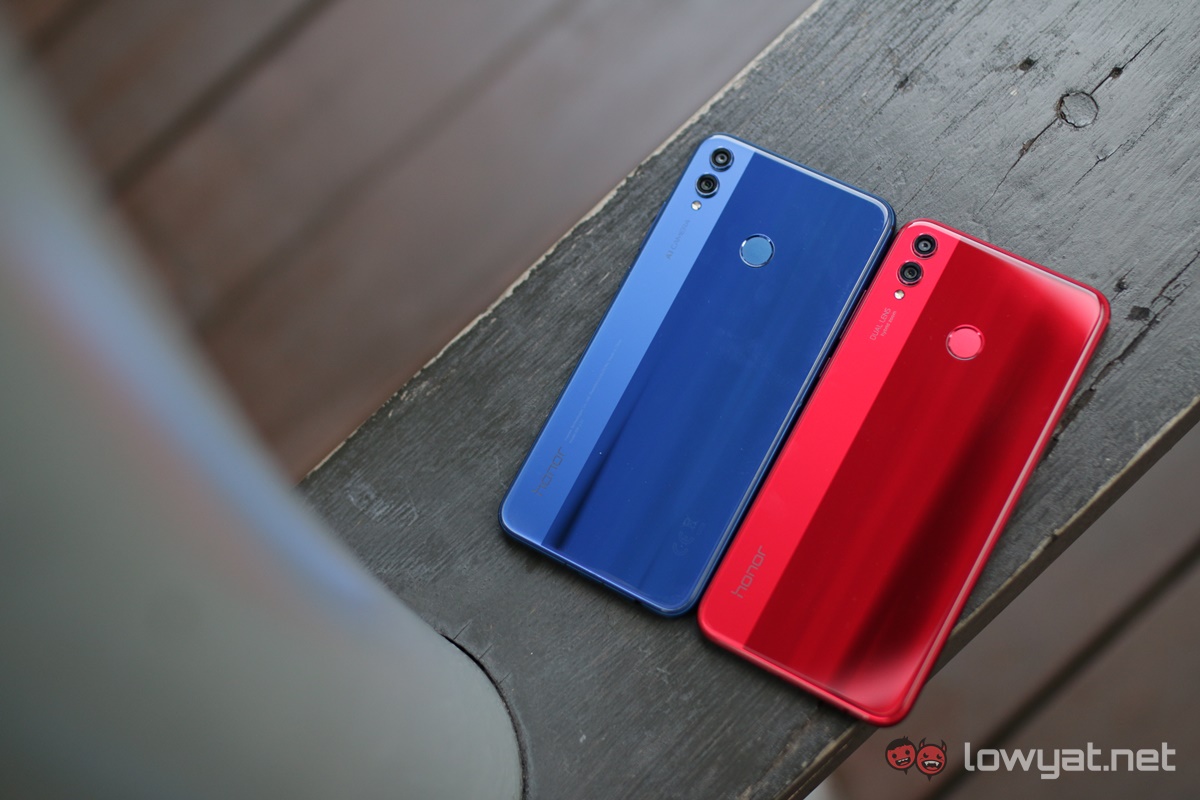
While one would think that the Nova 8X’s Kirin 710 SoC would be slower than Huawei’s own Kirin 970 SoC, my time with the phone quickly shows that that wasn’t the case. Overall, the phone is responsive, but there is the occasional lag occurring with apps now and then.
Relatively fluid experience with EMUI 8.2.
Digging deeper into the experience, the EMUI 8.2 experience of the Honor 8X is very enjoyable. Yes, it’s not stock Android, and despite the numerous pre-installed apps, it still feels really polished.
I find it odd though that the Honor 8X does not have some form of an Ambient Display like its Nova 3 cousins. Still, the feature isn’t critical to my daily use, and therefore doesn’t affect me.
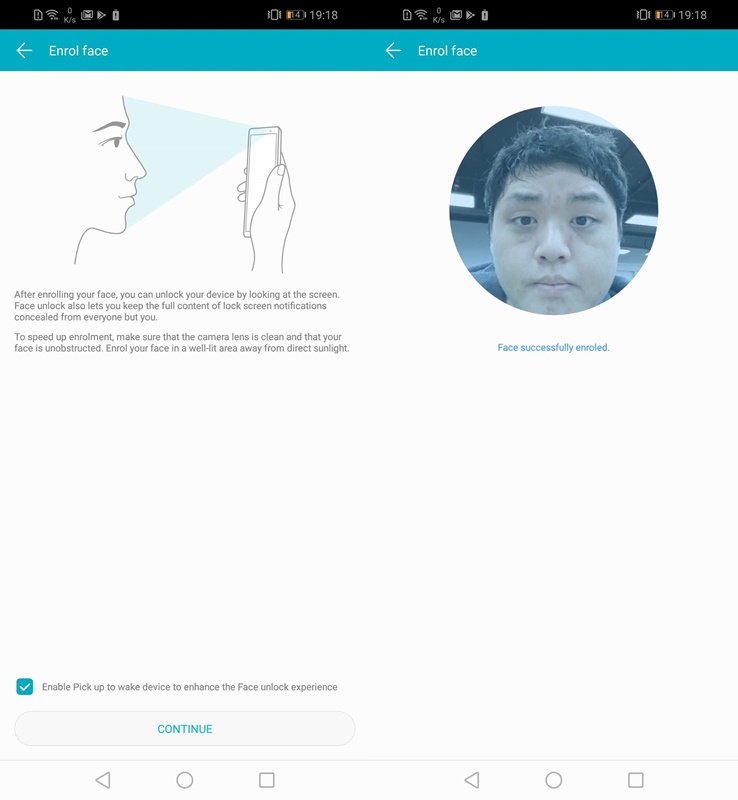
On another note, I thoroughly enjoy using the some of the gesture controls on the Honor 8X. Specifically, I find the three-finger “swipe down” to be the most used feature in my daily repertoire.
The Honor 8X’s Face Unlock feature is fast, but it isn’t always accurate. At times, I actually encounter literal face problems, where the camera just won’t recognize my facial details. On top of that, the feature only unlocks the phone, but never brings me to the Home screen. That privilege seems to be reserved only for the fingerprint scanner, which surprisingly happens to be extremely accurate.
Lackluster audio experience.
Beyond that, and as mentioned earlier, the phone’s experience feels good. The large display real estate helps when watching my favourite shows on YouTube and Netflix, along with the occasional mobile game thrown into the fray.
The only drawback to the whole experience was the Honor 8X’s audio system. Through its speaker grille, wired headphones, or a Bluetooth audio devices, the phone’s overall audio experience sounds hollow. But to be fair, audio immersion isn’t one of the brand’s strongest suits.
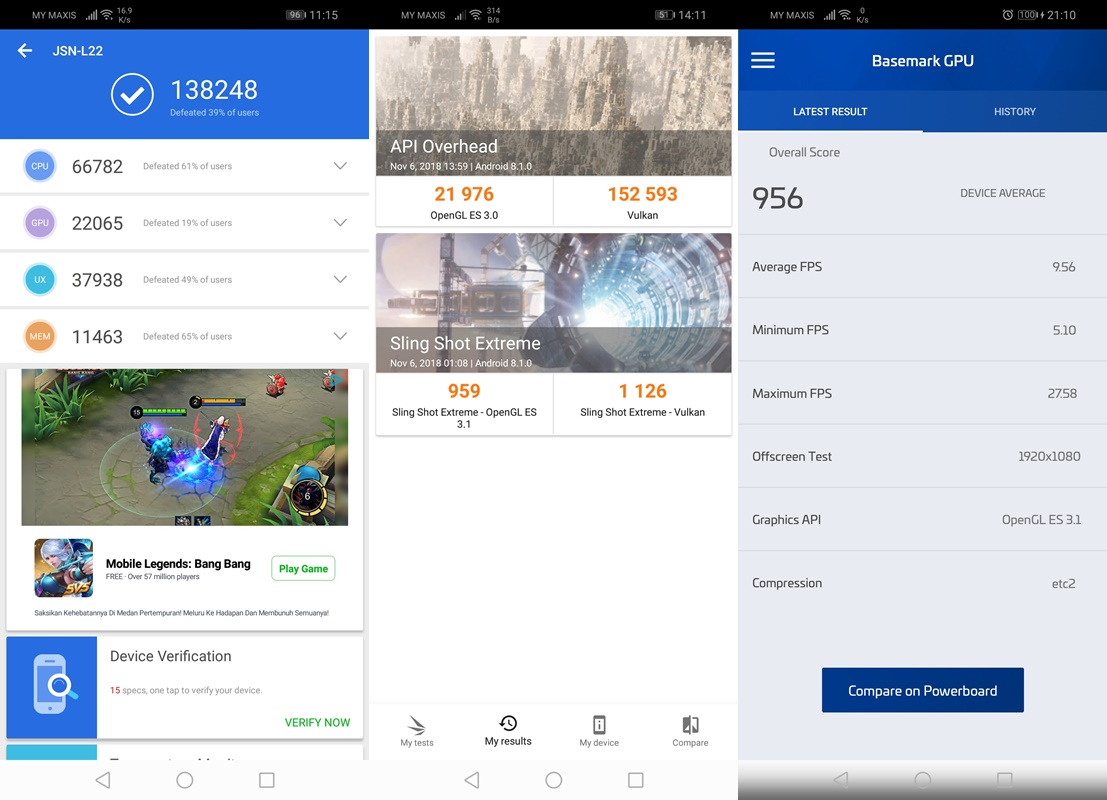
The synthetic benchmark of the Honor 8X is what you would expect of the mid-range Kirin 710 chipset. On AnTuTu, the phone scored 138248 points. With 3DMark, the chipset scored 959 points on the Sling Shot Extreme OpenGL ES 3.1 test, while the Vulkan version of the same test garnered 1126 points.
Real-time performance of the Honor 8X was nothing out of the ordinary. On most games, the framerates take a hit here and there. And this is with the phone’s GPU Turbo mode active. Interestingly enough, the phone never really heats up, even during intensive sessions of PUBG or Fortnite.
Outstanding battery life, moderately decent charging speed
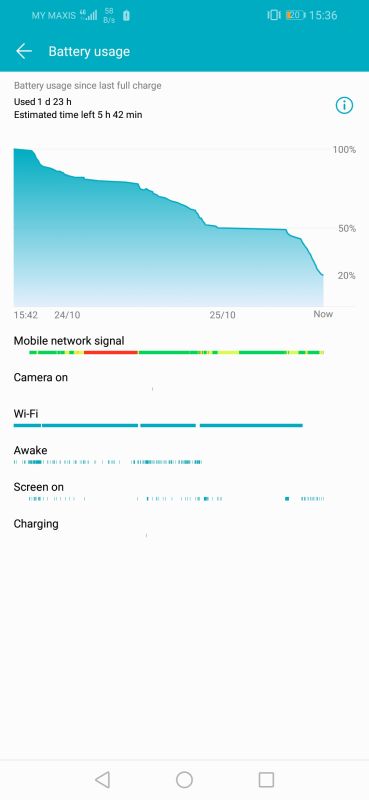
If there is one thing that absolutely has to be pointed out about the Honor 8X, it’ll have to be its extremely long-lasting battery life. Thanks, on no small part, to the combination of the hefty 3750mAh battery and the power efficiency of the Kirin 710 SoC.
As my daily driver, I get two full days, before even needing to recharge the phone. Even then, there’s approximately 20% left in the tank. In a continuous usage mode (e.g. Netflix, YouTube, surfing the web, etc.), the phone gives me between six and seven hours of screen time, which is well beyond the average. Charging is somewhat decent, with a full hour only giving me 45%.
Camera
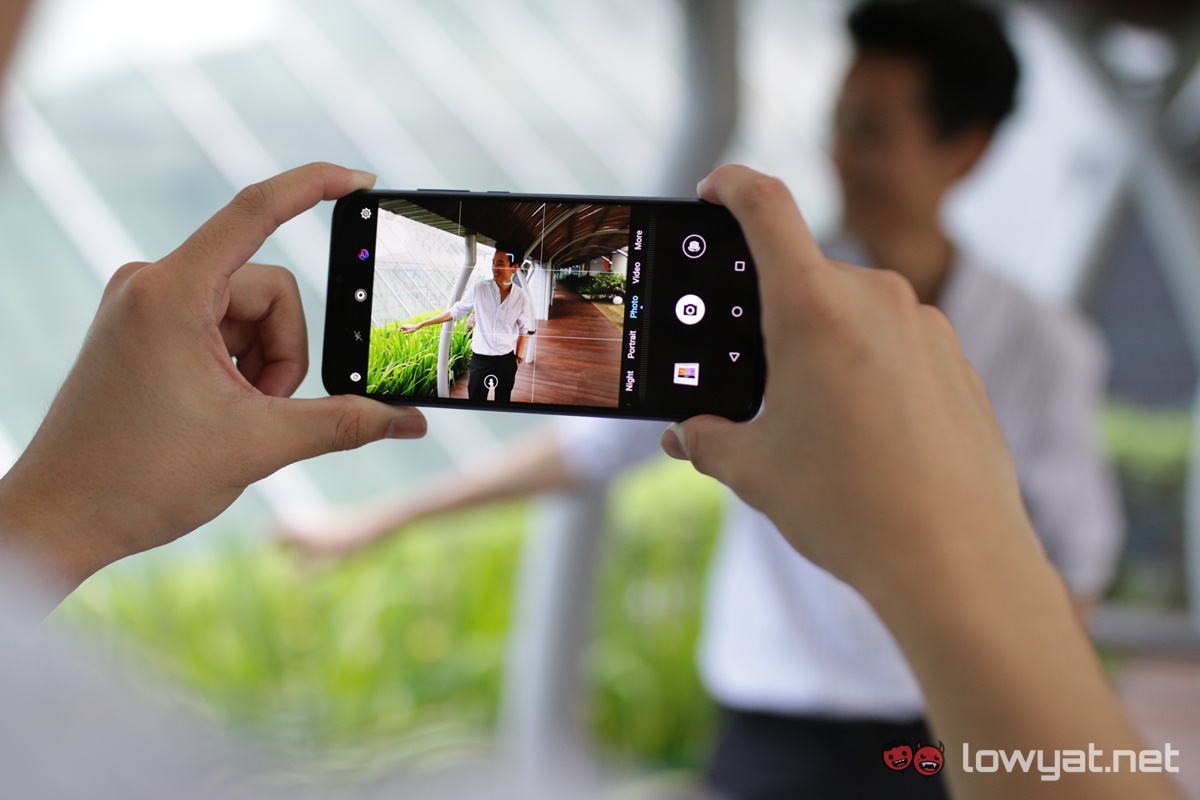
Honor isn’t a brand one would usually associate with mobile photography. However, given my experience with previous Honor smartphones and their respective camera system, I clearly expected the phone to turn out some relatively decent, if not impressive pictures. So then, does the camera disappoint?
Good daytime performance, pretty impressive Night Shot mode.
The answer is, no it doesn’t. In the daytime, the phone’s 20MP + 2 MP dual camera system delivers some really sharp and detailed images. But truth be told, that’s is primary expectation of most phones these days. Even mid-range models. What really impresses me is the camera’s low-light performance and its Night Mode.
Pictures I took in this mode looked outstandingly clear, even with a minimal amount of light from the surrounding area. The only drawback to Night Mode is the varying amount of time it takes to snap a photo. I say varying, because the feature captures an image based on the amount of light available. Simply put, the darker the environment, the longer it takes for the camera and the on-board AI to finalise the image.
Sample Images
Competition
At RM949, there’s no denying that the Honor 8X is one of the more affordable smartphones the brand has to offer the current mid-range market. But, as these things usually go, the Honor 8X does have a fair number of competitors to contend with.
Huawei Nova 3i
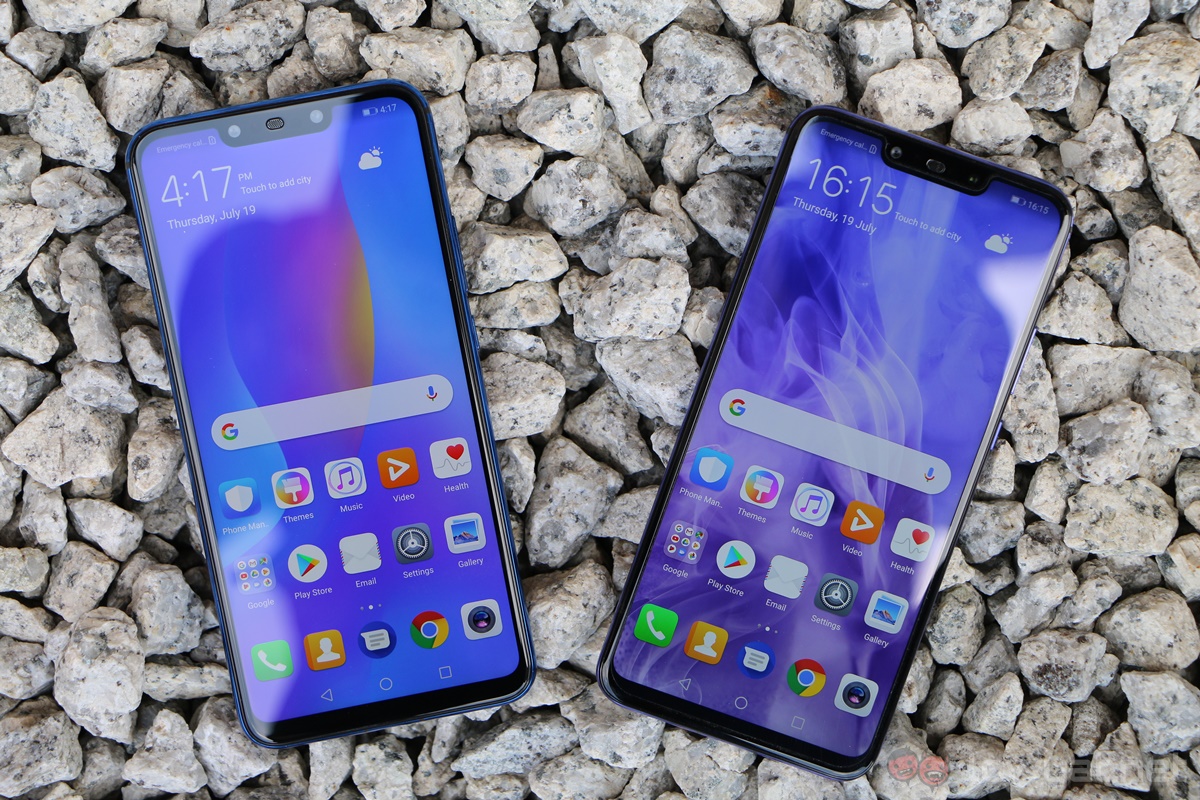
By comparison, the Huawei Nova 3i is practically a mirror image of the Honor 8X. Which is fitting, especially when you remember that latter is a sister brand to Huawei.
For the most part, both phones are equipped with the same Kirin 710 SoC, 4GB RAM. Even the same 128GB internal storage capacity. Further, the resolution of the Nova 3i’s dual main camera array is slightly bigger at 24MP + 2MP. Though the image quality produced on it had a tendency of looking fairly noisy, especially in low-light environments. It also uses a micro USB port for file transfer and charging, instead of a USB Type-C port.
Despite sharing near identical hardware, the Nova 3i currently retails at an SRP of RM1249. That’s nearly RM400 more than what the Honor 8X is going for. If nothing else, the price difference could be a decisive factor between them.
Realme 2 Pro
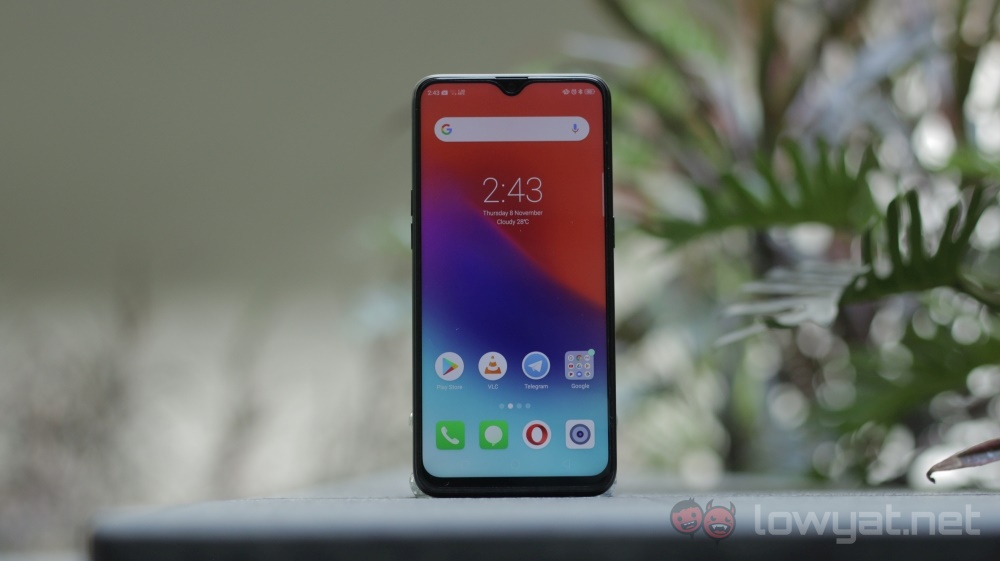
The brand may be less than a year old, but it’s hard to ignore the recently launched Realme 2 Pro as a proper contender to the Honor 8X. While available in three different variant and price points, the second variant is priced the same as the Honor 8X at RM949. For 6GB RAM, but half the internal storage capacity.
Specs-wise, the phone runs on a Qualcomm Snapdragon 660 SoC, a 6.3-inch Full HD+ IPS display, and a dual 16MP + 2MP main camera array. It’s got a slightly smaller 3500mAh battery than the Honor 8X’s 3750mAh, but as my colleague pointed out in his review about the phone, it’s got legs fit for a marathon.
Conclusion
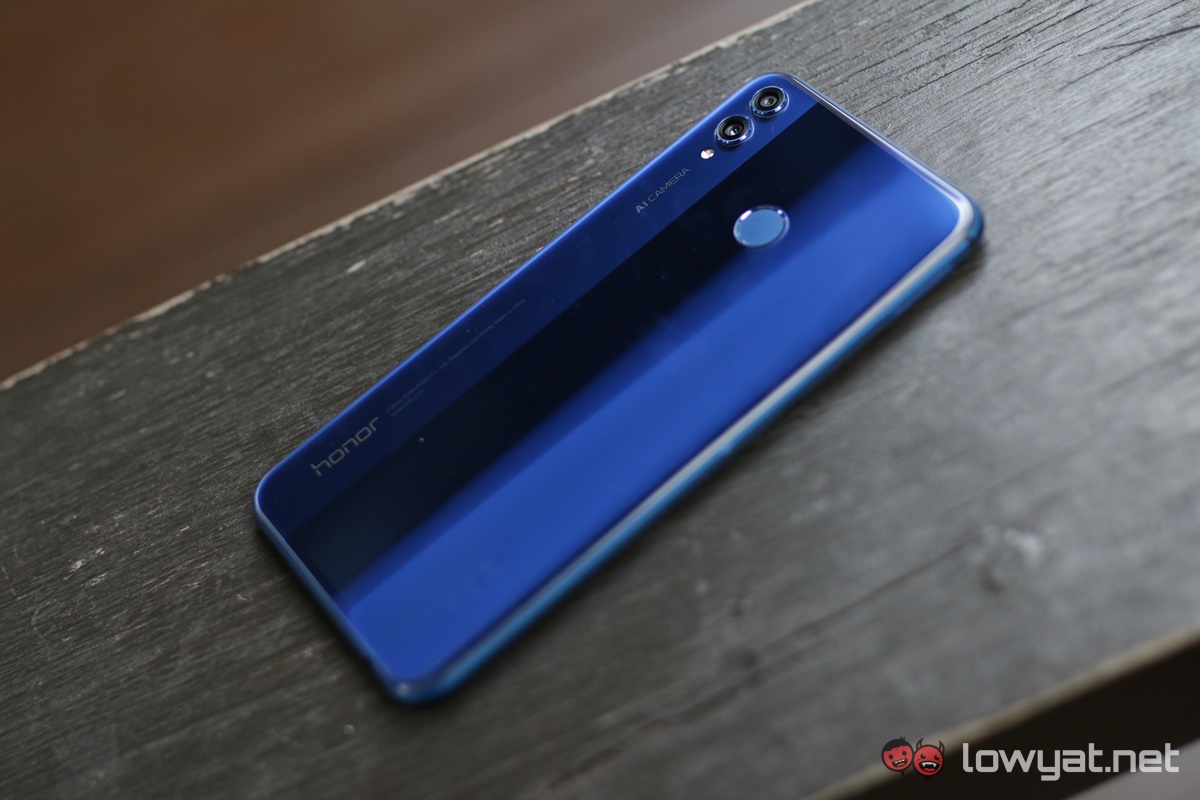
When all is said and done, the Honor 8X has an undeniable set of charms. From its big display, to its extremely power efficient Kirin 710 chipset and large internal battery. It’s pretty clear Honor spent a lot of time in trying to make this a real bang for your buck device.
Granted, the dual camera system is not the best on the market, especially with the variable time for the Night Mode. But that’s a trade-off I can live with, especially when you consider the gorgeous night shots you get at the end of the day.
A phone for those who prioritise endurance over performance.
But if there should be one governing factor that would influence your decision to purchase Honor 8X, let it be its exceptional battery and its insane endurance. That, and the fact that this phone only costs RM949.
Photography by Soh Li Jin and Leon Lam
Follow us on Instagram, Facebook, Twitter or Telegram for more updates and breaking news.


